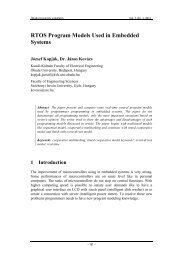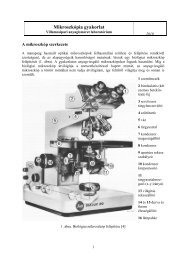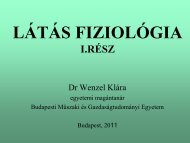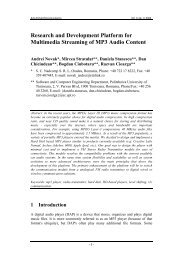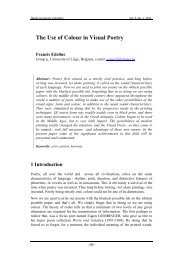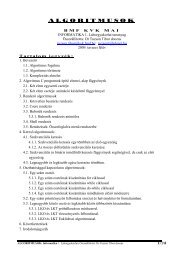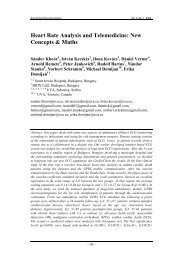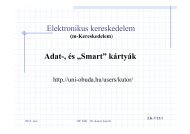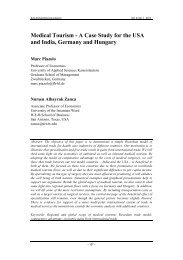Twin Concept of Fine Structure Constant as the 'Self Number ...
Twin Concept of Fine Structure Constant as the 'Self Number ...
Twin Concept of Fine Structure Constant as the 'Self Number ...
Create successful ePaper yourself
Turn your PDF publications into a flip-book with our unique Google optimized e-Paper software.
P. Várlaki et al. <strong>Twin</strong> <strong>Concept</strong> <strong>of</strong> <strong>Fine</strong> <strong>Structure</strong> <strong>Constant</strong> <strong>as</strong> <strong>the</strong> ‘Self <strong>Number</strong>-Archetype’ Part I: Observation, …<br />
“An important detail in this thinking about duality is <strong>the</strong> meaning <strong>of</strong> <strong>the</strong> numerical<br />
value <strong>of</strong> <strong>the</strong> electric charge, which, in <strong>the</strong> form <strong>of</strong> Sommerfeld’s fine-structure<br />
constant, is approximately 1/137. Pauli repeatedly stressed that progress in quantum<br />
field <strong>the</strong>ory w<strong>as</strong> linked to an understanding <strong>of</strong> this number […].<br />
The enigmatic conjecture ‘that <strong>the</strong> observer in present-day physics is still too<br />
completely detached’ also h<strong>as</strong> a meaning beyond physics. Indeed, in his article for<br />
Jung’s 80th birthday […], Pauli compares <strong>the</strong> observational situation in physics<br />
with that in psychology: ‘Since <strong>the</strong> unconscious is not quantitatively me<strong>as</strong>urable,<br />
and <strong>the</strong>refore not capable <strong>of</strong> ma<strong>the</strong>matical description, and since every extension<br />
<strong>of</strong> consciousness (’bringing into consciousness’) must be reaction alter <strong>the</strong> unconscious,<br />
we may expect a ‘problem <strong>of</strong> observation’ in relation to <strong>the</strong> unconscious,<br />
which, while it present analogies with that in atomic physics, never<strong>the</strong>less involves<br />
considerably greater difficulties.’<br />
For Pauli this analogy had implications in both directions: On <strong>the</strong> one hand, in<br />
<strong>the</strong> concluding remarks <strong>of</strong> <strong>the</strong> birthday article for Jung […,] he expresses <strong>the</strong> expectation<br />
that in <strong>the</strong> future <strong>the</strong> idea <strong>of</strong> <strong>the</strong> unconscious should emerge from <strong>the</strong><br />
purely <strong>the</strong>rapeutic realm and become more a problem <strong>of</strong> objective research. On<br />
<strong>the</strong> o<strong>the</strong>r hand, he thought that in physics <strong>the</strong> remedy for <strong>the</strong> too complete detachment<br />
<strong>of</strong> <strong>the</strong> observer may lie in <strong>the</strong> integration <strong>of</strong> <strong>the</strong> subjective, <strong>the</strong> psychic.<br />
Indeed, in Science and Western Thought […], Pauli <strong>as</strong>ks <strong>the</strong> question: ‘Shall we<br />
able to realize, on a higher plane, alchemy’s old dream <strong>of</strong> psycho-physical unity,<br />
by <strong>the</strong> creation <strong>of</strong> a unified conceptual foundation for <strong>the</strong> scientific comprehension<br />
<strong>of</strong> <strong>the</strong> physical <strong>as</strong> well <strong>as</strong> <strong>the</strong> psychical?’.<br />
This quest for a unity <strong>of</strong> physics and psyche is a recurrent <strong>the</strong>me in <strong>the</strong> exchange<br />
between Pauli and Jung and is <strong>the</strong> main concern in Pauli’s Background Physics,<br />
in which he w<strong>as</strong> guided by his dream motives (Hintergrundsphysik […]).” [32,<br />
33].<br />
On <strong>the</strong> b<strong>as</strong>is <strong>of</strong> <strong>the</strong> above approach and perspective <strong>of</strong> <strong>the</strong> synchronistic interpretation<br />
<strong>of</strong> <strong>the</strong> FSC, we propose (with <strong>the</strong> extension <strong>of</strong> <strong>the</strong> expression 4π 3 +π 2 +π) <strong>the</strong><br />
abstract and <strong>the</strong> same time anthropomorphic equation (5).<br />
We conclude that <strong>the</strong> synchronistic concept <strong>of</strong> FSC fulfils <strong>the</strong> claim <strong>of</strong> maximal<br />
simplicity, while also ensuring <strong>the</strong> value matches exactly me<strong>as</strong>urements <strong>of</strong> FSC.<br />
Simplicity is fulfilled by <strong>the</strong> four integers and <strong>the</strong> π appearing in <strong>the</strong> first part <strong>of</strong><br />
<strong>the</strong> equation. The connection opens <strong>the</strong> possibility <strong>of</strong> interpretations on <strong>the</strong> b<strong>as</strong>is<br />
<strong>of</strong> approaching <strong>the</strong> circle by quadrates, and so it gives <strong>the</strong> expressions 256+16+4,<br />
and 32+4+2. The former also reflects <strong>the</strong> Eddington approach.<br />
This way <strong>the</strong> determination <strong>of</strong> <strong>the</strong> IFSC <strong>of</strong> <strong>the</strong> horizontal axis is complementary <strong>as</strong><br />
well, but also mutually containing. In a similar way <strong>the</strong> contingency (“correspondentia”)<br />
approach and <strong>the</strong> causal approach are complementary. Obviously this<br />
connection also comes out <strong>of</strong> physics. Although <strong>the</strong> me<strong>as</strong>ured values are within<br />
<strong>the</strong> error limit and are derived from π, it can be interpreted only in <strong>the</strong> wider con-<br />
– 102 –



